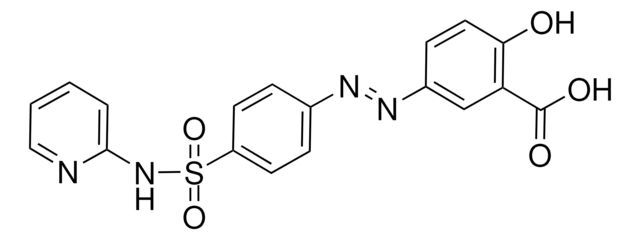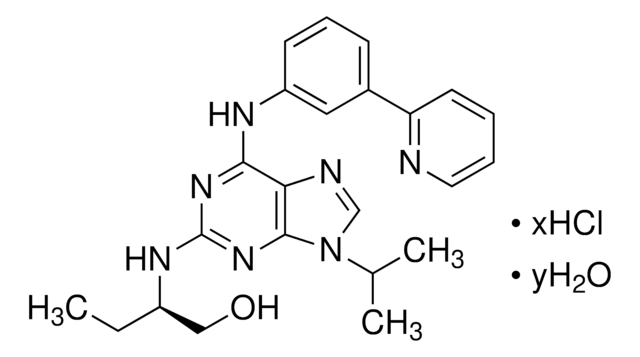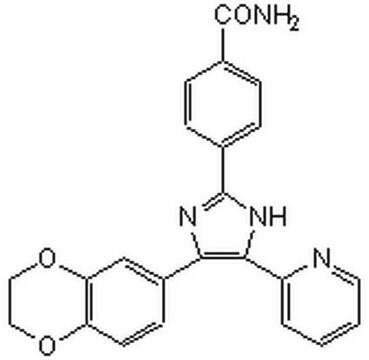About This Item
おすすめの製品
アッセイ
≥98% (HPLC)
形状
powder
色
white to tan
溶解性
DMSO: ≥15 mg/mL
保管温度
2-8°C
SMILES記法
CC(C)N(C=N1)C2=C1C(NCC3=CC(C(F)(F)F)=CC=C3)=NC=N2
InChI
1S/C16H16F3N5/c1-10(2)24-9-23-13-14(21-8-22-15(13)24)20-7-11-4-3-5-12(6-11)16(17,18)19/h3-6,8-10H,7H2,1-2H3,(H,20,21,22)
InChI Key
REKSFCCYDQMSIN-UHFFFAOYSA-N
アプリケーション
生物化学的/生理学的作用
シグナルワード
Danger
危険有害性情報
危険有害性の分類
Acute Tox. 3 Oral - Eye Irrit. 2 - Repr. 2 - Skin Irrit. 2 - STOT SE 3
ターゲットの組織
Respiratory system
保管分類コード
6.1C - Combustible acute toxic Cat.3 / toxic compounds or compounds which causing chronic effects
WGK
WGK 3
引火点(°F)
Not applicable
引火点(℃)
Not applicable
適用法令
試験研究用途を考慮した関連法令を主に挙げております。化学物質以外については、一部の情報のみ提供しています。 製品を安全かつ合法的に使用することは、使用者の義務です。最新情報により修正される場合があります。WEBの反映には時間を要することがあるため、適宜SDSをご参照ください。
Jan Code
SML0127-25MG:
SML0127-5MG:
SML0127-VAR:
SML0127-BULK:
試験成績書(COA)
製品のロット番号・バッチ番号を入力して、試験成績書(COA) を検索できます。ロット番号・バッチ番号は、製品ラベルに「Lot」または「Batch」に続いて記載されています。
ライフサイエンス、有機合成、材料科学、クロマトグラフィー、分析など、あらゆる分野の研究に経験のあるメンバーがおります。.
製品に関するお問い合わせはこちら(テクニカルサービス)










